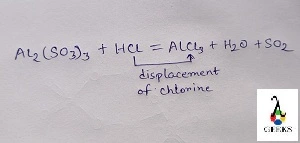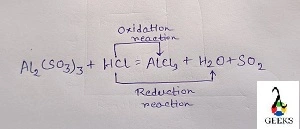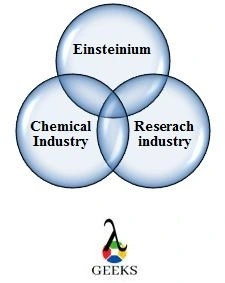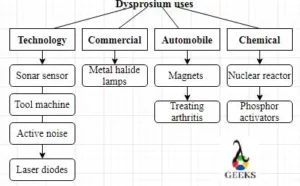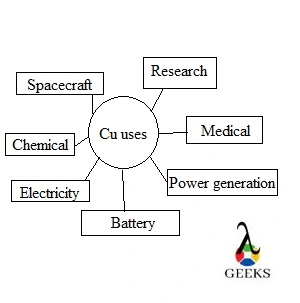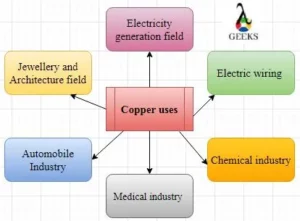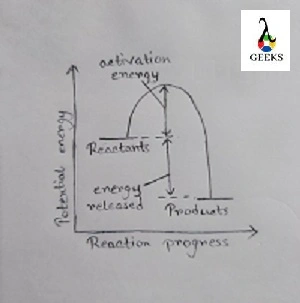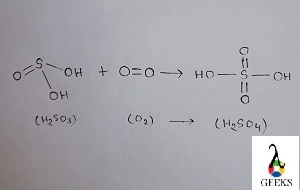Barium sulfate is a chemical compound with the formula BaSO4. It is a white crystalline solid that is odorless and insoluble in water. Barium sulfate is commonly used in various industries due to its unique properties. It has a high density, making it useful as a contrast agent in X-ray imaging procedures. Additionally, it is chemically inert, non-toxic, and has a low solubility, which makes it ideal for applications such as paints, coatings, plastics, and ceramics. In this article, we will explore the properties of barium sulfate in detail, including its physical and chemical characteristics, as well as its uses and safety considerations. So, let’s dive in and discover the fascinating world of barium sulfate!
Key Takeaways
- Barium sulfate is a white crystalline solid that is insoluble in water.
- It is commonly used as a contrast agent in medical imaging procedures.
- Barium sulfate has a high density, making it useful in various industries, including oil and gas exploration.
- It is non-toxic and has low reactivity, making it safe for many applications.
- Barium sulfate is also used in the production of pigments, paper coatings, and plastics.
Statement about Barium Sulfate
Barium sulfate is a compound that has gained significant attention due to its unique properties and wide range of applications. In this section, we will clarify some important aspects about barium sulfate to provide a comprehensive understanding of this compound.
Clarifying the Correct Statement about Barium Sulfate
Barium sulfate, with the chemical formula BaSO4, is an inorganic compound known for its insolubility in water and other common solvents. It is a white powder that is odorless and tasteless. One of the key properties of barium sulfate is its high density, which makes it useful in various industries.
Barium sulfate has a molar mass of 233.39 grams per mole and appears as a crystalline solid. It is often found in nature as the mineral barite, which is the main source of barium and its compounds. The compound is produced by reacting barium ions with sulfate ions, resulting in the formation of barium sulfate precipitate.
Due to its insolubility, barium sulfate is considered non-toxic and safe for use in various applications. It is widely used in the medical field as a contrast agent for X-ray imaging. Its radiopaque nature allows it to absorb X-rays, making it ideal for enhancing the visibility of certain tissues and organs during medical procedures.
In the pharmaceutical industry, barium sulfate is commonly used as a filler material in tablets and capsules. It provides bulk and improves the flow properties of the medication. Additionally, it is used in suspensions for gastrointestinal imaging, allowing for better visualization of the digestive system.
Barium sulfate also finds applications in the paint industry, where it is used as a pigment and filler material. Its high density and chemical stability make it an excellent choice for creating white pigments that provide opacity and brightness to paints. Furthermore, it is used in ceramics and paper coatings to enhance their properties.
Another notable application of barium sulfate is in the oil drilling industry. It is used as a suspension agent in drilling fluids, helping to control the density and viscosity of the fluid. This ensures efficient drilling operations and prevents blowouts.
While barium sulfate is generally considered safe, it is important to note that it can have side effects if ingested in large quantities or inappropriately used. It is crucial to follow safety precautions and use it under the guidance of professionals to avoid any potential risks.
In conclusion, barium sulfate is a versatile compound with unique properties that make it valuable in various industries. Its insolubility, high density, and non-toxic nature contribute to its widespread use as a contrast agent, filler material, pigment, and suspension agent. Understanding the correct statement about barium sulfate is essential for its safe and effective utilization in different applications.
Why Barium Sulfate is Not Salon
When we hear the term “barium sulfate,” our minds may not immediately associate it with salons or beauty treatments. And rightfully so, because barium sulfate is not a substance commonly found in salons or used in beauty treatments. So, let’s dive into the reasons why barium sulfate and salons are not related.
Explanation of why barium sulfate is not related to salons or beauty treatments
-
Chemical Properties: Barium sulfate is a chemical compound with the chemical formula BaSO4. It is primarily known for its insolubility in water and other common solvents. This property makes it unsuitable for use in salon products, which typically require ingredients that can dissolve and mix easily.
-
Appearance and Texture: Barium sulfate is a white powder that is odorless and tasteless. On the other hand, salon products often come in various forms such as creams, gels, sprays, or liquids, which are quite different from the fine powder consistency of barium sulfate.
-
Toxicity and Safety Precautions: While barium sulfate is generally considered safe for consumption in small amounts, it is not without its risks. Ingesting large quantities of barium sulfate can be harmful, leading to potential side effects such as nausea, vomiting, and abdominal pain. Due to these safety concerns, it is not a suitable ingredient for use in salon or beauty treatments.
-
Medical Applications: Despite its unsuitability for salon use, barium sulfate finds its place in the medical field. It is commonly used as a contrast agent in X-ray imaging due to its radiopaque properties. When ingested, barium sulfate helps create a clear image of the gastrointestinal tract, aiding in the diagnosis of various conditions. However, it is important to note that the medical use of barium sulfate is under strict supervision and administered by healthcare professionals.
-
Industrial Applications: Barium sulfate has several industrial applications, but these are far removed from the salon industry. It is used as a filler material in the paint industry, providing opacity and enhancing the durability of coatings. Additionally, barium sulfate is used in the production of pigments, ceramics, paper coatings, and even in oil drilling as a suspension agent. These applications highlight the versatility of barium sulfate, but they have no direct connection to salons or beauty treatments.
In conclusion, barium sulfate is not related to salons or beauty treatments due to its chemical properties, appearance, toxicity concerns, and its applications in the medical and industrial sectors. It is crucial to understand the distinct characteristics and uses of different substances to ensure their safe and appropriate application in various industries.
Uses of Barium Sulfate
Barium sulfate is a versatile compound that finds applications in various industries due to its unique properties. Let’s explore some of the different ways in which barium sulfate is utilized.
Medical Applications
Barium sulfate is widely used in the field of medicine, particularly in diagnostic imaging. It serves as a contrast agent in X-ray examinations, helping to enhance the visibility of certain organs and tissues. Due to its radiopaque nature, barium sulfate appears white on X-ray images, allowing doctors to obtain clear and accurate results. This makes it an invaluable tool in procedures such as gastrointestinal imaging, where it is used to visualize the digestive tract.
Pharmaceutical Industry
In the pharmaceutical industry, barium sulfate is used as an excipient in the formulation of various medications. It acts as a filler material, providing bulk to tablets and capsules. Additionally, barium sulfate is often used in oral suspensions to ensure even distribution of the active ingredients. Its insolubility in water makes it an ideal choice for these applications, as it does not affect the dissolution rate of the medication.
Paint Industry
Barium sulfate is also extensively used in the paint industry. It is employed as a pigment extender, enhancing the opacity and brightness of paint formulations. By acting as a filler material, it helps to improve the coverage and hiding power of the paint. Barium sulfate is particularly useful in high-gloss paints, where it contributes to the smooth and reflective finish.
Ceramics and Paper Coatings
In the ceramics industry, barium sulfate is used as a raw material in the production of glazes and ceramic bodies. It imparts desirable properties such as increased hardness and resistance to chemical attack. Barium sulfate is also utilized in paper coatings, where it improves the surface smoothness and brightness of the paper. This makes it suitable for applications such as high-quality printing and packaging materials.
Oil Drilling
Barium sulfate has found its way into the oil drilling industry as well. It is used as a weighting agent in drilling fluids, helping to control the pressure and stabilize the wellbore. By adding barium sulfate to the drilling mud, the density of the fluid can be increased, preventing blowouts and facilitating the removal of drill cuttings. Its insolubility and non-toxic nature make it a preferred choice for this application.
In conclusion, barium sulfate is a versatile compound with a wide range of applications. From its crucial role in medical imaging to its contributions in the paint, ceramics, and oil drilling industries, barium sulfate continues to prove its worth. Its unique properties, such as insolubility and radiopacity, make it an indispensable component in various fields. As research and technology progress, we can expect to see even more innovative uses for barium sulfate in the future.
Why Barium has a High Melting Point
Barium, a chemical element with the symbol Ba and atomic number 56, is a silvery-white metal that is known for its high melting point. In this section, we will discuss the factors contributing to the high melting point of barium.
Barium’s high melting point can be attributed to several factors. Firstly, its atomic structure plays a significant role. Barium has a relatively large atomic radius, which results in strong metallic bonding between its atoms. Metallic bonding occurs when the outer electrons of metal atoms are delocalized and form a “sea” of electrons that holds the metal atoms together. In the case of barium, the strong metallic bonding contributes to the high melting point by requiring a significant amount of energy to break these bonds and transition from a solid to a liquid state.
Additionally, the presence of d-electrons in the electronic configuration of barium also contributes to its high melting point. The d-electrons are located in the inner shell of the atom and are shielded by the outer electrons. This shielding effect reduces the repulsion between the d-electrons, allowing them to be more tightly held by the nucleus. As a result, the metallic bonding in barium is stronger, leading to a higher melting point.
Furthermore, the lattice structure of barium also plays a role in its high melting point. Barium crystallizes in a body-centered cubic lattice, where each barium atom is surrounded by eight neighboring atoms. This arrangement creates a strong and stable structure, which requires a significant amount of energy to break and transition into a liquid state.
In summary, the high melting point of barium can be attributed to its atomic structure, including the strong metallic bonding, the presence of d-electrons, and the stable lattice structure. These factors collectively contribute to the high energy required to transition barium from a solid to a liquid state.
Composition of Barium Sulfate
Barium sulfate is a compound that consists of the elements barium (Ba), sulfur (S), and oxygen (O). Its chemical formula is BaSO4. This compound is commonly found in nature as the mineral barite, which is a white or colorless crystalline solid. Barium sulfate is also synthesized for various industrial applications.
The chemical structure of barium sulfate is composed of one barium atom bonded to one sulfur atom and four oxygen atoms. The barium atom is centrally located, with the sulfur and oxygen atoms surrounding it in a tetrahedral arrangement. This arrangement gives barium sulfate its unique properties.
Barium sulfate is an inorganic compound that is insoluble in water. It is a white powder with a high density and a molar mass of approximately 233.4 grams per mole. Its appearance as a fine white powder makes it useful in various industries.
The insolubility of barium sulfate in water is a key characteristic that makes it valuable in different applications. This compound is non-toxic and has a low solubility, which makes it safe for use in medical and industrial settings. It is widely used as a contrast agent in X-ray imaging due to its radiopaque properties. In the pharmaceutical industry, barium sulfate is used as a filler material in tablets and capsules.
In the paint industry, barium sulfate is used as a pigment and filler material. It provides opacity and brightness to paints and coatings. Additionally, barium sulfate is used in the production of ceramics, paper coatings, and oil drilling fluids. Its high density and insolubility make it an effective suspension agent in various applications.
When used in medical procedures, such as gastrointestinal imaging, barium sulfate is generally safe. However, like any substance, it can have side effects if not used properly. It is important to follow safety precautions and guidelines when handling and administering barium sulfate. Healthcare professionals should be aware of any potential allergies or sensitivities their patients may have to this compound.
In summary, barium sulfate is a compound composed of barium, sulfur, and oxygen. Its chemical structure consists of one barium atom bonded to one sulfur atom and four oxygen atoms. Barium sulfate is a white powder that is insoluble in water and has a high density. It is used in various industries, including the medical and pharmaceutical fields, as a contrast agent, filler material, pigment, and suspension agent. When used correctly, barium sulfate is generally safe, but precautions should be taken to avoid any potential side effects.
Precipitation of Barium Sulfate
Barium sulfate is a compound that can be formed through a process called precipitation. In this section, we will explore whether barium sulfate is a precipitate or not and delve into the details of this fascinating phenomenon.
Explanation of whether barium sulfate is a precipitate or not
When certain chemicals are mixed together in a solution, a reaction can occur that leads to the formation of a solid substance. This solid substance is known as a precipitate. In the case of barium sulfate, it is indeed a precipitate.
Barium sulfate has a chemical formula of BaSO4 and is commonly found as a white powder. It is insoluble in water, meaning it does not dissolve easily. When barium ions (Ba2+) and sulfate ions (SO42-) are present in a solution, they can react with each other to form solid barium sulfate.
The precipitation of barium sulfate is a result of the strong attraction between the barium ions and sulfate ions. These ions come together and form a lattice-like structure, creating a solid precipitate that settles at the bottom of the solution.
The formation of barium sulfate as a precipitate has important applications in various industries. In the medical field, it is used as a contrast agent in X-ray imaging. Barium sulfate is radiopaque, meaning it does not allow X-rays to pass through easily. This property makes it ideal for highlighting certain areas of the body during medical procedures.
In the pharmaceutical industry, barium sulfate is used as a filler material in tablets and capsules. It helps to give these medications the desired shape and size. Additionally, barium sulfate is used in the paint industry as a pigment and in ceramics as a glaze. It is also used in paper coatings and as a suspension agent in oil drilling.
While barium sulfate has many useful properties, it is important to note that it can also have potential side effects and toxicity. When used in medical procedures, it is generally considered safe. However, in some cases, it may cause gastrointestinal discomfort or allergic reactions. It is crucial to follow safety precautions and consult with a healthcare professional when using barium sulfate.
In conclusion, barium sulfate is indeed a precipitate that forms when barium ions and sulfate ions react in a solution. This solid substance has a variety of applications in different industries, including medicine, pharmaceuticals, paint, ceramics, and oil drilling. While it offers many benefits, it is essential to be aware of its potential side effects and use it responsibly.
Luminescence Properties of Barium Sulfate
Barium sulfate is widely known for its use as a contrast agent in X-ray imaging due to its radiopaque properties. However, when it comes to luminescence, barium sulfate does not exhibit any significant properties. Unlike other compounds such as phosphors or fluorescent materials, barium sulfate does not emit light when exposed to certain wavelengths or when excited by an external energy source.
Luminescence refers to the emission of light from a substance as a result of various processes such as fluorescence, phosphorescence, or chemiluminescence. These processes involve the absorption of energy by the material, followed by the re-emission of that energy in the form of light. While some compounds can exhibit luminescent properties, barium sulfate is not one of them.
The lack of luminescence in barium sulfate can be attributed to its crystal structure and electronic configuration. Barium sulfate forms a crystalline lattice structure in which the barium ions are surrounded by sulfate ions. This arrangement does not allow for the absorption and re-emission of energy in a way that would result in luminescence.
It is important to note that while barium sulfate itself does not exhibit luminescence, it can be used as a component in luminescent materials. For example, barium sulfate can be used as a filler material in the production of phosphors, which are substances that emit light when excited by certain energy sources. In this case, the barium sulfate acts as a host matrix for the luminescent material, providing a stable and inert environment.
In conclusion, barium sulfate does not possess inherent luminescent properties. Its crystal structure and electronic configuration prevent it from absorbing and emitting light in a way that would result in luminescence. However, it can still be utilized in the production of luminescent materials as a filler or host matrix.
Physical Properties of Barium Sulfate
Barium sulfate is a compound with a chemical formula BaSO4. It is widely known for its unique physical properties, which make it useful in various industries. Let’s explore the physical characteristics and properties of barium sulfate in more detail.
Appearance
Barium sulfate is a white powder that is odorless and tasteless. It has a fine, crystalline structure, giving it a smooth texture. The powder is often used in its pure form or as a component in different products.
Solubility
One of the notable properties of barium sulfate is its insolubility in water and most organic solvents. It has an extremely low solubility, with only about 0.0002 grams of barium sulfate dissolving in one liter of water at room temperature. This insolubility makes it highly stable and resistant to chemical reactions, making it suitable for various applications.
Density
Barium sulfate has a relatively high density compared to other compounds. Its density ranges from 4.5 to 5.0 grams per cubic centimeter, depending on the specific form and purity. This high density contributes to its effectiveness in certain applications, such as in the medical field.
Molar Mass
The molar mass of barium sulfate is approximately 233.4 grams per mole. This value is calculated by adding the atomic masses of the individual elements in the compound. The molar mass is an important parameter for determining the amount of barium sulfate needed in a given reaction or process.
Toxicity
While barium sulfate is generally considered to be non-toxic, it is important to handle it with care and follow safety precautions. Ingesting large amounts of barium sulfate can be harmful, as it may cause gastrointestinal issues. However, in medical applications, it is used in controlled doses and under the supervision of healthcare professionals.
Medical Applications
Barium sulfate is widely used in the medical field as a contrast agent in X-ray imaging. Its radiopaque properties make it an ideal substance for enhancing the visibility of certain body parts during diagnostic procedures. When administered orally or rectally, barium sulfate suspensions provide excellent contrast in gastrointestinal imaging, allowing doctors to obtain clear and accurate images.
Industrial Applications
Apart from its medical applications, barium sulfate finds extensive use in various industries. In the pharmaceutical industry, it is used as a filler material in tablets and capsules. Its inert nature and insolubility make it an ideal choice for this purpose. In the paint industry, barium sulfate is used as a pigment and filler material, providing opacity and improving the durability of coatings. It is also used in ceramics, paper coatings, and oil drilling as a suspension agent.
In conclusion, barium sulfate possesses unique physical properties that make it valuable in a range of applications. Its white powder appearance, insolubility in water, high density, and non-toxic nature contribute to its versatility. Whether it’s in the medical field as a contrast agent or in various industries as a filler or pigment, barium sulfate continues to play a significant role.
Barium Properties
Barium is a chemical element with the symbol Ba and atomic number 56. It belongs to the alkaline earth metals group on the periodic table. In this section, we will provide an overview of the properties and characteristics of barium as an element.
Physical Properties
Barium has a molar mass of 137.33 grams per mole and a density of 3.62 grams per cubic centimeter. It appears as a soft, silvery-white metal at room temperature. However, it is highly reactive and quickly oxidizes in the presence of air, forming a thin layer of oxide on its surface.
Chemical Properties
Barium is known for its high reactivity with other elements. It readily combines with oxygen, sulfur, and carbon to form various compounds. One of the most common compounds of barium is barium sulfate (BaSO4), which is the focus of this article.
Barium Sulfate Properties
Barium sulfate is a white, odorless powder that is insoluble in water. It has a chemical formula of BaSO4 and is commonly found in nature as the mineral barite. Barium sulfate is widely used in various industries due to its unique properties.
Medical Applications
One of the main uses of barium sulfate is as a contrast agent in X-ray imaging. When ingested or injected into the body, it acts as a radiopaque substance, meaning it absorbs X-rays and appears white on X-ray images. This property makes it ideal for gastrointestinal imaging, where it helps visualize the digestive system.
Pharmaceutical Industry
Barium sulfate is also used in the pharmaceutical industry as an additive in medications. It is often used as a filler material in tablets and capsules to give them the desired weight and appearance. Additionally, it is used in suspensions to improve the consistency and stability of liquid medications.
Paint Industry
In the paint industry, barium sulfate is used as a pigment extender. It helps improve the opacity and brightness of pigments, resulting in a more vibrant and durable paint finish. Barium sulfate is also used as a filler material in paint formulations, enhancing their viscosity and reducing settling.
Ceramics and Paper Coatings
Barium sulfate finds applications in ceramics and paper coatings as well. In ceramics, it acts as a fluxing agent, reducing the melting temperature of the materials and improving their workability. In paper coatings, it enhances the smoothness and brightness of the paper surface, resulting in better print quality.
Oil Drilling
Barium sulfate is used in the oil drilling industry as a weighting agent. It helps control the density of drilling fluids, allowing for efficient drilling operations. The high density of barium sulfate helps prevent blowouts and maintain stability during drilling.
Safety Precautions
While barium sulfate has many useful properties, it is important to handle it with caution due to its toxicity. Ingesting or inhaling large amounts of barium sulfate can be harmful to human health. It is essential to follow safety guidelines and use protective equipment when working with barium sulfate.
In conclusion, barium sulfate is a versatile compound with a wide range of applications in various industries. Its unique properties make it valuable in medical imaging, pharmaceuticals, paints, ceramics, paper coatings, and oil drilling. However, it is crucial to handle barium sulfate safely and responsibly to avoid any potential health risks.
Barium Sulfate Appearance
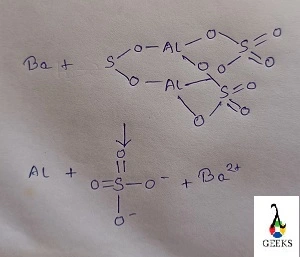
Barium sulfate is a compound that is widely recognized for its distinctive visual appearance. Let’s delve into the description of the visual characteristics of barium sulfate.
Description of the Visual Appearance of Barium Sulfate
Barium sulfate is commonly found in the form of a fine white powder. Its appearance is reminiscent of a soft, fluffy substance that resembles powdered sugar or flour. The powder has a smooth texture and a high degree of fineness, making it easy to handle and manipulate.
When observed under normal lighting conditions, barium sulfate appears as a brilliant white substance. Its color is exceptionally pure and bright, giving it a striking visual appeal. This characteristic makes barium sulfate a sought-after ingredient in various industries, including the pharmaceutical, paint, ceramics, and paper coatings industries.
One of the most remarkable aspects of barium sulfate’s appearance is its insolubility in water. Unlike many other substances, barium sulfate does not dissolve when mixed with water. Instead, it forms a suspension, where the fine particles of the compound disperse throughout the liquid without dissolving. This unique property is crucial for its applications in various fields, such as oil drilling and gastrointestinal imaging.
In the medical field, barium sulfate’s visual properties play a crucial role in its use as a contrast agent for X-ray imaging. Due to its high density and radiopacity, barium sulfate stands out in X-ray images, allowing medical professionals to visualize the gastrointestinal tract and diagnose conditions accurately. Its bright white appearance ensures clear visibility and enhances the accuracy of the diagnostic process.
To summarize, barium sulfate’s appearance as a fine white powder, its insolubility in water, and its high density and radiopacity make it a valuable substance in various industries and medical applications. Its visual properties contribute significantly to its effectiveness as a contrast agent in X-ray imaging and its versatility as a filler material, pigment, and suspension agent.
Reactivity of Barium Chloride with White Precipitate Formation
When barium chloride reacts with certain substances, it often leads to the formation of a white precipitate. This reaction is of particular interest due to the distinct properties and applications of the resulting compound, barium sulfate.
Explanation of the Reaction between Barium Chloride and Substances that Result in the Formation of a White Precipitate
Barium chloride, with the chemical formula BaCl2, is a compound composed of barium and chlorine. It is a white crystalline solid that is highly soluble in water. On the other hand, barium sulfate (BaSO4) is a white powder that is insoluble in water. When barium chloride reacts with substances that contain sulfate ions (SO4^2-), such as sodium sulfate (Na2SO4), a chemical reaction occurs, resulting in the formation of barium sulfate as a white precipitate.
The reaction can be represented by the following equation:
BaCl2 + Na2SO4 -> BaSO4 + 2NaCl
In this reaction, barium chloride and sodium sulfate react to form barium sulfate and sodium chloride. The white precipitate of barium sulfate is formed as a result of the insolubility of barium sulfate in water. It separates from the solution and settles at the bottom as a solid.
The formation of a white precipitate is a useful indicator of the presence of sulfate ions in a solution. It allows chemists to identify the presence of sulfate compounds and determine their concentration. This reaction is often employed in analytical chemistry for the qualitative and quantitative analysis of sulfate ions.
Applications of Barium Sulfate
Barium sulfate has several important applications in various industries, thanks to its unique properties. One of the most well-known uses of barium sulfate is as a contrast agent in X-ray imaging. Due to its high density and radiopacity, barium sulfate is an excellent material for enhancing the visibility of certain body parts during medical imaging procedures. It helps highlight the gastrointestinal tract, allowing doctors to diagnose and monitor conditions such as gastrointestinal disorders and tumors.
In the pharmaceutical industry, barium sulfate is used as a filler material in the production of tablets and capsules. It provides bulk and improves the flow properties of the medication. Barium sulfate is also utilized in the paint industry as a pigment and extender. Its high refractive index and chemical inertness make it an ideal additive for achieving desired colors and improving the durability of paint coatings.
Additionally, barium sulfate finds applications in ceramics, paper coatings, and oil drilling. In ceramics, it acts as a flux, reducing the melting point of the materials and enhancing their strength. In paper coatings, barium sulfate improves the smoothness and brightness of the paper surface. In oil drilling, it is used as a suspension agent to control the density of drilling fluids and prevent blowouts.
Safety Precautions
While barium sulfate is generally considered safe for its intended applications, it is important to take certain precautions when handling this compound. Barium sulfate is not toxic and does not pose significant health risks. However, ingestion of large amounts can cause gastrointestinal discomfort, such as constipation or diarrhea. It is essential to follow medical guidelines and instructions when using barium sulfate as a contrast agent for gastrointestinal imaging.
In conclusion, the reactivity of barium chloride with substances that result in the formation of a white precipitate is a fascinating chemical reaction. The resulting compound, barium sulfate, has diverse applications in industries such as medicine, paint, ceramics, and oil drilling. Understanding the properties and behavior of barium sulfate allows us to harness its unique characteristics for various purposes while ensuring safety precautions are followed.
Solubility of Barium Sulfate
Barium sulfate is a compound with interesting properties, one of which is its solubility. Solubility refers to the ability of a substance to dissolve in a particular solvent. In the case of barium sulfate, it is known for its extremely low solubility in water and most organic solvents. This characteristic makes it an important compound in various industries and applications.
Discussion on the solubility of barium sulfate in different substances
-
Water: Barium sulfate is considered highly insoluble in water. It has a solubility of approximately 2.4 mg/L at room temperature, which means that only a small amount of barium sulfate can dissolve in water. This low solubility is due to the strong attraction between the barium ions (Ba2+) and sulfate ions (SO42-) in the crystal lattice structure of the compound. As a result, barium sulfate forms a white precipitate when it comes into contact with water.
-
Organic solvents: Barium sulfate is also insoluble in most organic solvents such as ethanol, acetone, and benzene. This property is advantageous in many applications where the compound is used as a filler material, such as in the paint industry. The insolubility of barium sulfate ensures that it remains suspended in the paint, providing improved opacity and brightness to the final product.
-
Acids and bases: Barium sulfate is resistant to the effects of acids and bases. It does not dissolve in strong acids or bases, making it an ideal compound for applications that require chemical stability. This property is particularly important in the medical field, where barium sulfate is used as a contrast agent in X-ray imaging. The compound‘s insolubility ensures that it remains intact during the examination, allowing for accurate and clear imaging of the gastrointestinal tract.
-
Other substances: While barium sulfate is generally insoluble in most substances, there are a few exceptions. It can dissolve in concentrated sulfuric acid, forming barium hydrogen sulfate. Additionally, barium sulfate can be dissolved in molten alkali metal sulfates, such as potassium sulfate or sodium sulfate, at high temperatures. These exceptions, however, are not commonly encountered in everyday applications.
In summary, the solubility of barium sulfate is a crucial property that contributes to its wide range of applications. Its insolubility in water and most organic solvents makes it suitable for use as a contrast agent in X-ray imaging, a filler material in the paint industry, and a suspension agent in various other industries. Understanding the solubility characteristics of barium sulfate allows for its effective and safe utilization in these applications.
Natural Occurrence of Barium
Barium is a chemical element that can be found naturally in the Earth’s crust. It is not found in its pure form, but rather in the form of various compounds. One of the most common compounds of barium is barium sulfate (BaSO4).
Explanation of where barium is found in nature and its geological occurrence
Barium sulfate is widely distributed in nature and can be found in various geological formations. It occurs as a mineral called barite or baryte, which is a white or colorless mineral consisting of barium sulfate. Barite deposits are commonly found in sedimentary rocks, such as limestone, dolomite, and shale.
These deposits are formed through a process known as hydrothermal deposition. Hydrothermal fluids, rich in barium, rise through fractures in the Earth’s crust and interact with the surrounding rocks. As the fluids cool, barium sulfate precipitates out and forms veins or nodules within the rocks.
Barite deposits can also be found in association with other minerals, such as quartz, calcite, and fluorite. These minerals often form in hydrothermal veins or as cavity fillings in rocks.
In addition to hydrothermal deposits, barite can also be found in marine sediments. When barium-rich water mixes with seawater, barium sulfate can precipitate out and accumulate on the ocean floor. Over time, these accumulations can form thick layers of barite-rich sediments.
Some of the largest deposits of barite are found in countries like China, India, and the United States. These deposits are economically important as a source of barium and are extensively mined for various industrial applications.
In summary, barium is naturally occurring and is commonly found in the form of barium sulfate. It is primarily found in hydrothermal deposits and marine sediments, and its geological occurrence is closely tied to the formation of these deposits.
Melting Point of Barium Sulfate
Barium sulfate is a compound with a fascinating range of properties. One of the key characteristics of this compound is its melting point. Let’s delve into the details of the melting point of barium sulfate.
Barium sulfate, with the chemical formula BaSO4, is a white powder that is insoluble in water. It has a molar mass of 233.38 grams per mole and a density of 4.50 grams per cubic centimeter. This compound is widely used in various industries, including the pharmaceutical, paint, ceramics, and oil drilling industries.
When it comes to the melting point of barium sulfate, it is important to note that this compound does not actually melt in the traditional sense. Instead, it undergoes a process called decomposition when heated to high temperatures. This means that barium sulfate breaks down into its constituent elements, barium and sulfur dioxide, rather than transitioning from a solid to a liquid state.
The decomposition of barium sulfate occurs at a relatively high temperature. The compound begins to decompose at around 1,580 degrees Celsius (2,876 degrees Fahrenheit). At this temperature, barium sulfate starts to release sulfur dioxide gas and forms barium oxide. As the temperature increases further, the decomposition process continues until all of the barium sulfate has broken down.
To summarize, the melting point of barium sulfate is not a true melting point but rather a decomposition temperature. At approximately 1,580 degrees Celsius (2,876 degrees Fahrenheit), barium sulfate begins to decompose, releasing sulfur dioxide gas and forming barium oxide. This unique property of barium sulfate makes it useful in various applications, such as a contrast agent in X-ray imaging and as a filler material in the paint industry.
| Property | Value |
|---|---|
| Chemical Formula | BaSO4 |
| Solubility | Insoluble in water |
| Molar Mass | 233.38 g/mol |
| Density | 4.50 g/cm³ |
| Appearance | White powder |
| Melting Point | Decomposes at around 1,580°C (2,876°F) |
| Applications | X-ray imaging, paint industry, etc. |
In conclusion, the melting point of barium sulfate is not a true melting point but rather a decomposition temperature. This compound decomposes at approximately 1,580 degrees Celsius (2,876 degrees Fahrenheit), releasing sulfur dioxide gas and forming barium oxide. This unique property of barium sulfate contributes to its wide range of applications in various industries.
Reaction of Barium with Water
When barium reacts with water, an interesting chemical reaction takes place. Barium is a highly reactive metal, and when it comes into contact with water, it undergoes a vigorous reaction. This reaction can be summarized by the following equation:
Ba + 2H2O → Ba(OH)2 + H2
In this reaction, barium displaces hydrogen from water, resulting in the formation of barium hydroxide (Ba(OH)2) and hydrogen gas (H2). The reaction is exothermic, meaning it releases heat.
During the reaction, the barium metal reacts with water molecules to form barium hydroxide. Barium hydroxide is a strong base and is highly soluble in water. It is a white, crystalline solid that dissolves readily in water to form a clear, colorless solution.
The hydrogen gas produced during the reaction is highly flammable and can be ignited with a spark or flame. It is important to handle this reaction with caution and in a controlled environment.
It is worth noting that the reaction of barium with water is highly exothermic, meaning it releases a significant amount of heat. This heat can cause the water to boil and produce steam. Therefore, it is essential to carry out this reaction in a well-ventilated area to prevent the buildup of pressure.
Overall, the reaction of barium with water is a fascinating chemical process that results in the formation of barium hydroxide and hydrogen gas. It is important to handle this reaction with care due to the flammability of hydrogen gas and the release of heat.
Source of Barium Sulfate
Barium sulfate is a compound that is widely used in various industries due to its unique properties. In this section, we will explore the origin and production of barium sulfate, shedding light on how this versatile compound is obtained and manufactured.
Explanation of the Origin and Production of Barium Sulfate
Barium sulfate, with the chemical formula BaSO4, is a white powder that is insoluble in water. It occurs naturally as the mineral barite, which is found in various parts of the world, including the United States, China, India, and Morocco. Barite deposits are typically formed through the precipitation of barium-rich solutions in underground cavities.
To extract barium sulfate from barite, the mineral is first mined from the earth using conventional mining techniques. Once the ore is obtained, it undergoes a series of processes to purify and refine it into a usable form.
The production of barium sulfate involves several steps. Let’s take a closer look at the main stages:
-
Crushing and Grinding: The mined barite ore is crushed into smaller pieces and then ground into a fine powder. This process increases the surface area of the ore, making it easier to extract the desired compound.
-
Gravity Separation: The powdered barite is mixed with water and subjected to gravity separation. This technique takes advantage of the difference in density between barite and other impurities, allowing the barite to settle at the bottom while the impurities are removed.
-
Chemical Purification: The separated barite is further purified through chemical processes. This involves treating the barite with chemicals to remove any remaining impurities, such as iron, calcium, and magnesium.
-
Precipitation: The purified barite solution is then mixed with a solution of sulfuric acid (H2SO4) to precipitate barium sulfate. This reaction forms a solid precipitate of barium sulfate, which is then filtered and dried.
-
Milling and Packaging: The dried barium sulfate is milled to achieve the desired particle size. It is then packaged in various forms, including powder, granules, or as a suspension in liquid form, depending on its intended application.
The production of barium sulfate requires careful control of the manufacturing process to ensure consistent quality and purity. The resulting product is a fine white powder with a high density and excellent chemical stability.
Barium sulfate is widely used in various industries, including the pharmaceutical, paint, ceramics, and oil drilling industries. Its unique properties, such as its insolubility in water and its ability to absorb X-rays, make it a valuable compound for a range of applications.
In the next section, we will delve into the properties and applications of barium sulfate, exploring its role as a contrast agent in medical imaging, as well as its use as a filler material in the paint industry, among other uses. Stay tuned to learn more about the fascinating world of barium sulfate!
Conclusion
In conclusion, barium sulfate is a compound with a wide range of properties that make it useful in various industries. Its high density, insolubility in water, and non-toxic nature make it an ideal choice for applications such as X-ray imaging, oil well drilling fluids, and paints. Barium sulfate is also known for its excellent chemical stability, which allows it to withstand harsh conditions without deteriorating. Additionally, its ability to absorb X-rays makes it an essential component in medical diagnostics. Overall, barium sulfate’s unique properties make it a versatile and valuable substance in many different fields.
Frequently Asked Questions
1. Which statement about barium sulfate is correct?
Barium sulfate is a white powder that is insoluble in water and has a high melting point.
2. Why is barium sulfate used for X-ray imaging instead of salon?
Barium sulfate is used for X-ray imaging because it is a radiopaque contrast agent, meaning it can be easily seen on X-ray images. Salon does not possess this property.
3. What is barium sulfate made of?
Barium sulfate is made up of the elements barium, sulfur, and oxygen. Its chemical formula is BaSO4.
4. Is barium sulfate a precipitate?
Yes, barium sulfate can form a white precipitate when it reacts with certain substances, such as barium chloride.
5. What does barium sulfate look like?
Barium sulfate appears as a white powder. It is commonly used as a filler material in various industries.
6. What are the properties of barium?
Barium is a chemical element with a high melting point and density. It is toxic and requires safety precautions when handling.
7. What reacts with barium chloride to form a white precipitate?
Barium chloride reacts with sulfate ions (SO4^2-) to form a white precipitate of barium sulfate.
8. What is barium sulfate soluble in?
Barium sulfate is insoluble in water and many other solvents. It does not dissolve easily.
9. Where is barium found in nature?
Barium is found in nature primarily as barite (barium sulfate) and witherite (barium carbonate) minerals.
10. Where does barium sulfate come from?
Barium sulfate can be obtained from natural sources, such as barite minerals, or it can be synthesized in the laboratory for various applications.

